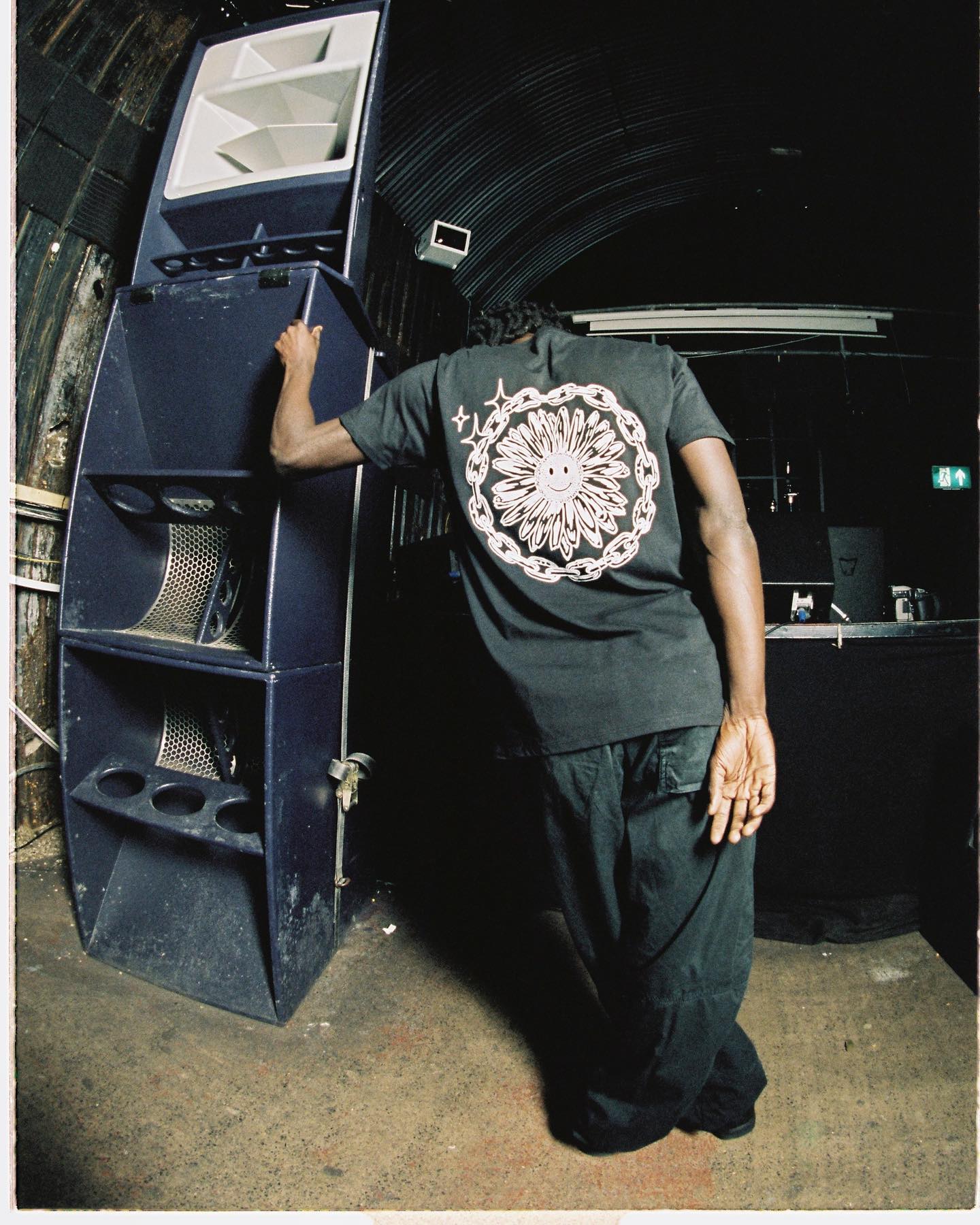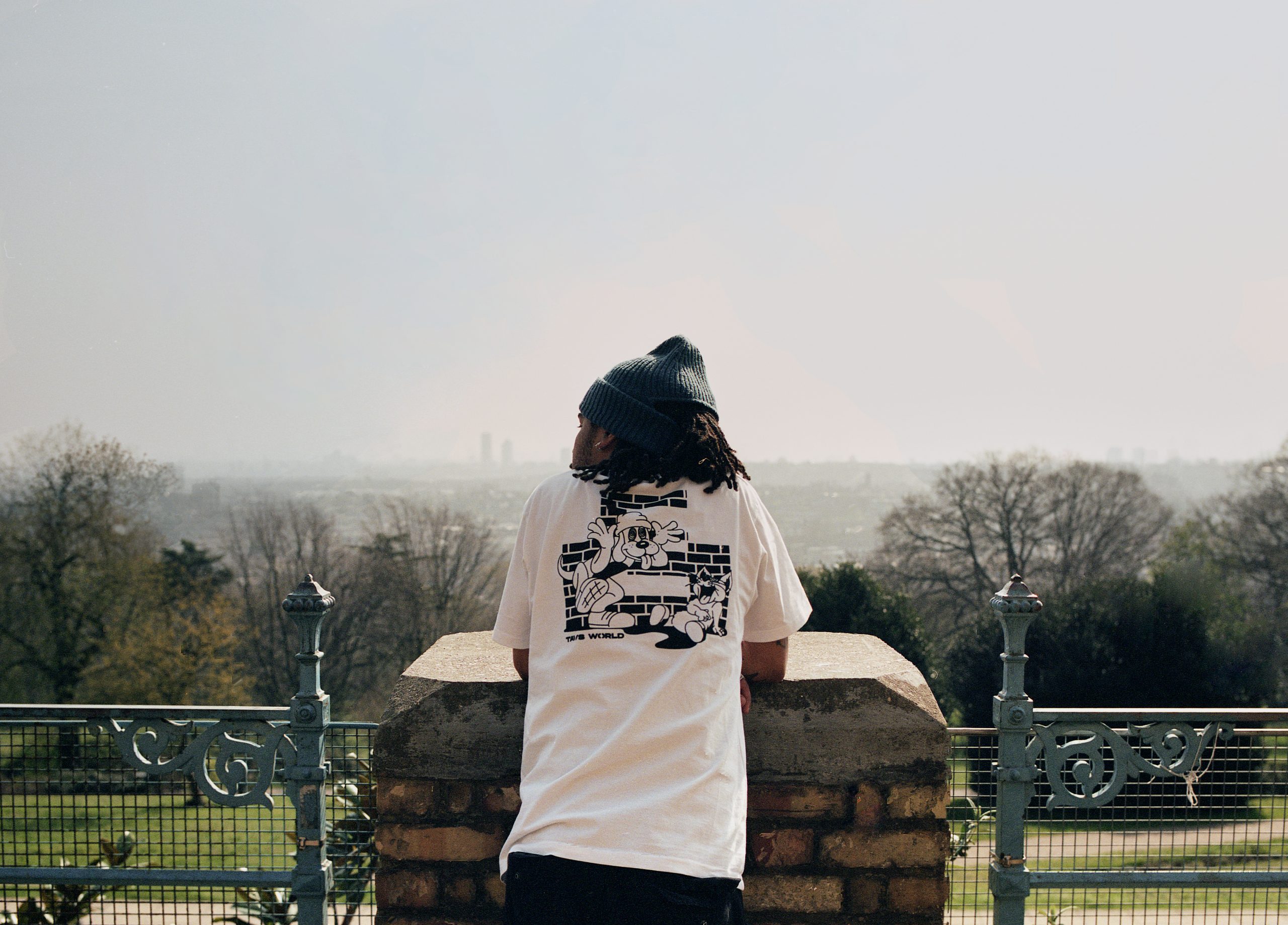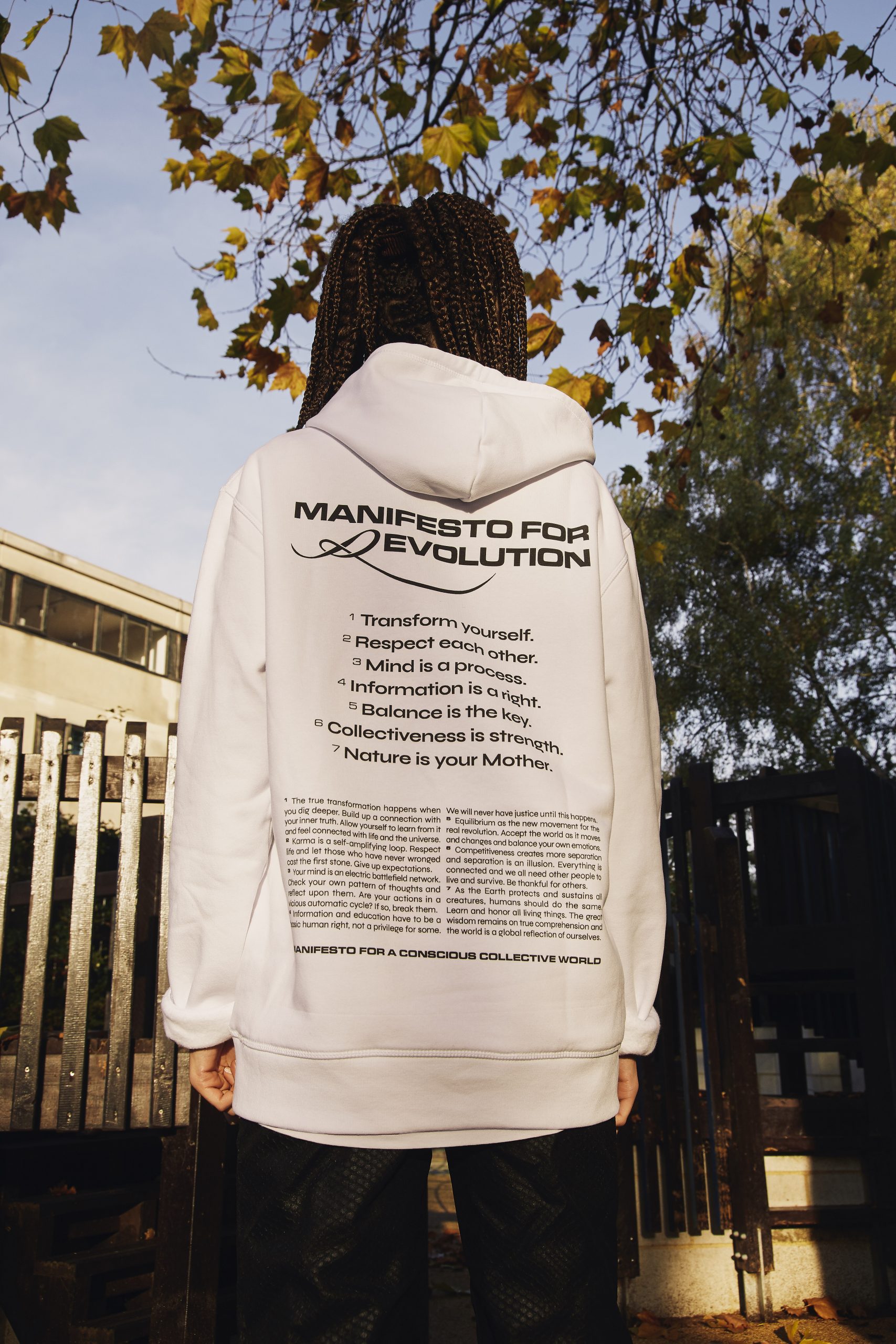The state of band merch
We all love discovering music from grassroots bands and new releases from our old favourites, but small, grassroots artists are the ones who need our support. So we wondered: how can we help out independent artists?
Nowadays everyone is doing fashion collabs (thanks Travis Scott and Lil Nas X), and competing on the merch field has become a game of big labels working with huge artists to sell the most T-shirts and trainers. It’s the all-too-familiar cycle of late-stage capitalism.
So, it was time to do some digging. We looked into the Google search volume and resale value of vintage band T-shirts on eBay to calculate bands’ potential earnings. We also had a look at modern artists’ merch data and compared male vs female-led groups’ potential lost earnings from band tees. Then, we cross-referenced this data against Spotify streams to answer the question: how many streams would an artist need to make the same amount of money from T-shirt sales?
Which bands could be making the most from selling vintage T-shirts?
Sadly, it’s not the new artists who benefit from merchandise sales the most. Older, vintage bands with graphic T-shirts are the highest earners in the resale game. But which band would earn the most?
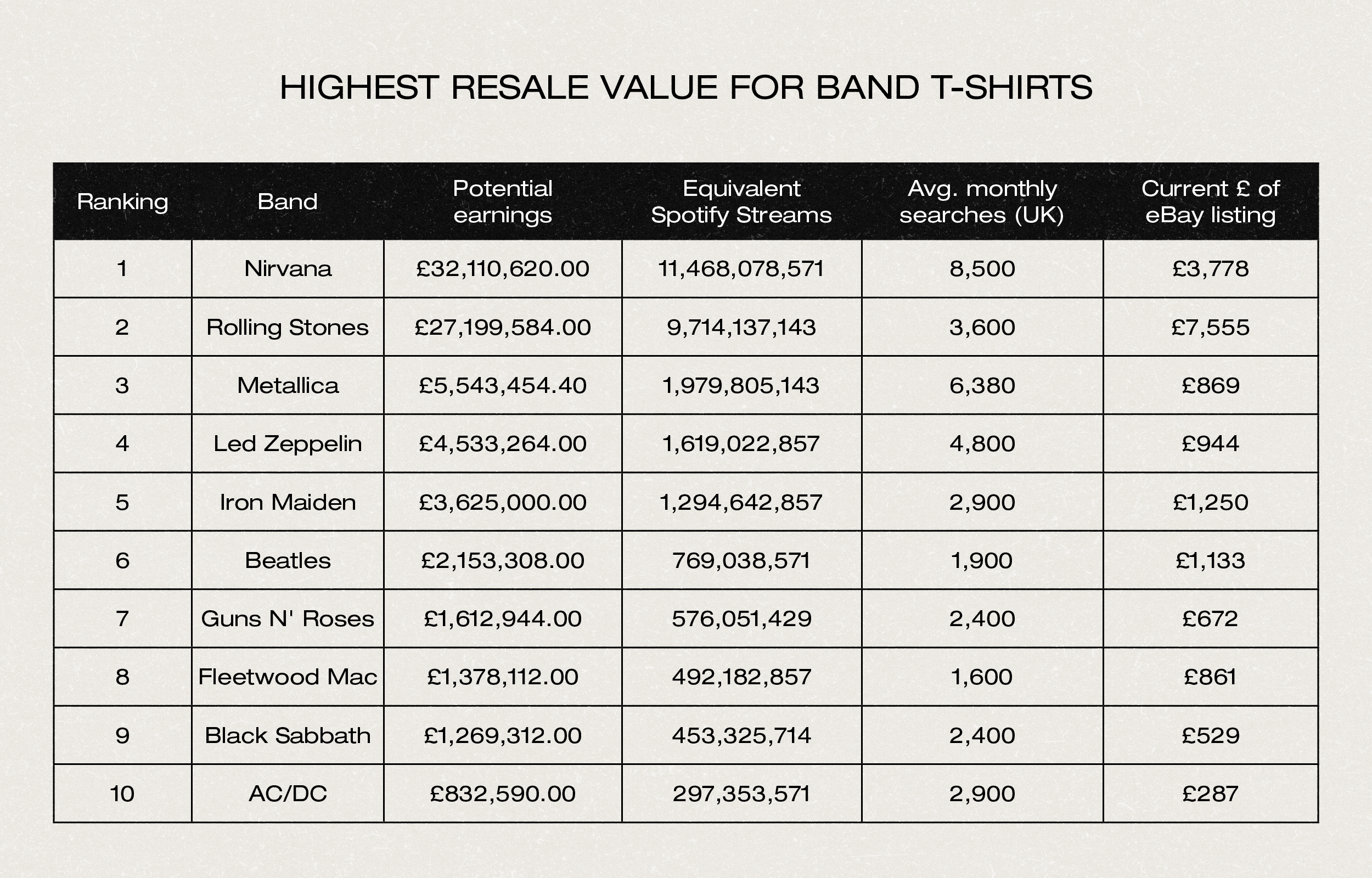
First up is Nirvana. Their vintage shirts could make up to £32,110,620 if the 8,500 monthly searches and the sky-high prices on eBay are to be believed.
The Rolling Stones spin into second place for the band T-shirt race. If every one of the 3,600 people who Googled ‘Rolling Stones vintage shirt’ this month bought one, the Stones could reel in over £27 million – that’s just under £8,000 per highest resale.
With the two big ones out the way, the rest of the field falls away and the amount a band can earn from vintage shirt sales is much less. Metallica comes in third with more people looking for vintage tees every month than the Stones (that’s 6,380), but their statement tees sell for much less on eBay, at just £869 maximum. That makes just over five million pounds for them to get from their old, worn-in T-shirts.
Everyone seems to own a Nirvana tee (whether they listen to their music or not). But giving your cash to independent bands can actually help them make the music you like.
How the money-making machine has changed in music
It’s pretty clear that the music industry has changed, but streaming platforms are leading more and more artists into financial trouble.
On average, artists make 0.0028 pence per stream on Spotify. That means that for Nirvana to get as much money from their Spotify streams as they would from selling vintage T-shirts, it would take over 11 billion streams per month.
With CD sales reducing by 27% annually between 2018 and 2020, artists can no longer rely on physical copy sales to make enough money, and streaming services like Spotify don’t help. The Rolling Stones would need over nine billion streams a month to get the kind of cash they would from their shirts. Meanwhile, Metallica, Led Zeppelin and Iron Maiden would have to top one billion streams every single month.
As CD sales go out of fashion and the streaming services rule over us, independent artists can get their music out there, but making enough cash to keep making music is hard. The uptake of people wanting vintage T-shirts shows that people can make money from merch, and that the more scarce the goods, the more people are willing to pay.
So, where will newer bands look when they want to get their cash flowing? Merch sales.
Are modern artists missing out?
Under late-stage capitalism, band merchandise has become commodified. This means artists who want to sell products collaborate with luxury or high-end fashion brands to produce items that profit them both. But this then means the rights to the band merch are sold, it’s mass-produced and more available compared to vintage T-shirts, which were made by smaller manufacturers or the bands themselves. Eventually, the resale of newer mass-made band merchandise earns less than the vintage, more coveted merch.
Put simply: modern artists earn less from merch resale than older bands because capitalism sucks.
For example, Travis Scott’s merch tees originally set you back around £113.10, but are only listed for sale on eBay at a max of £368. Scott’s famous collabs with Nike, McDonald’s and Air Jordan might have been complete sell-outs when they came out, but now the mountain of merch out there means that selling it later doesn’t get half as much as the vintage tees.
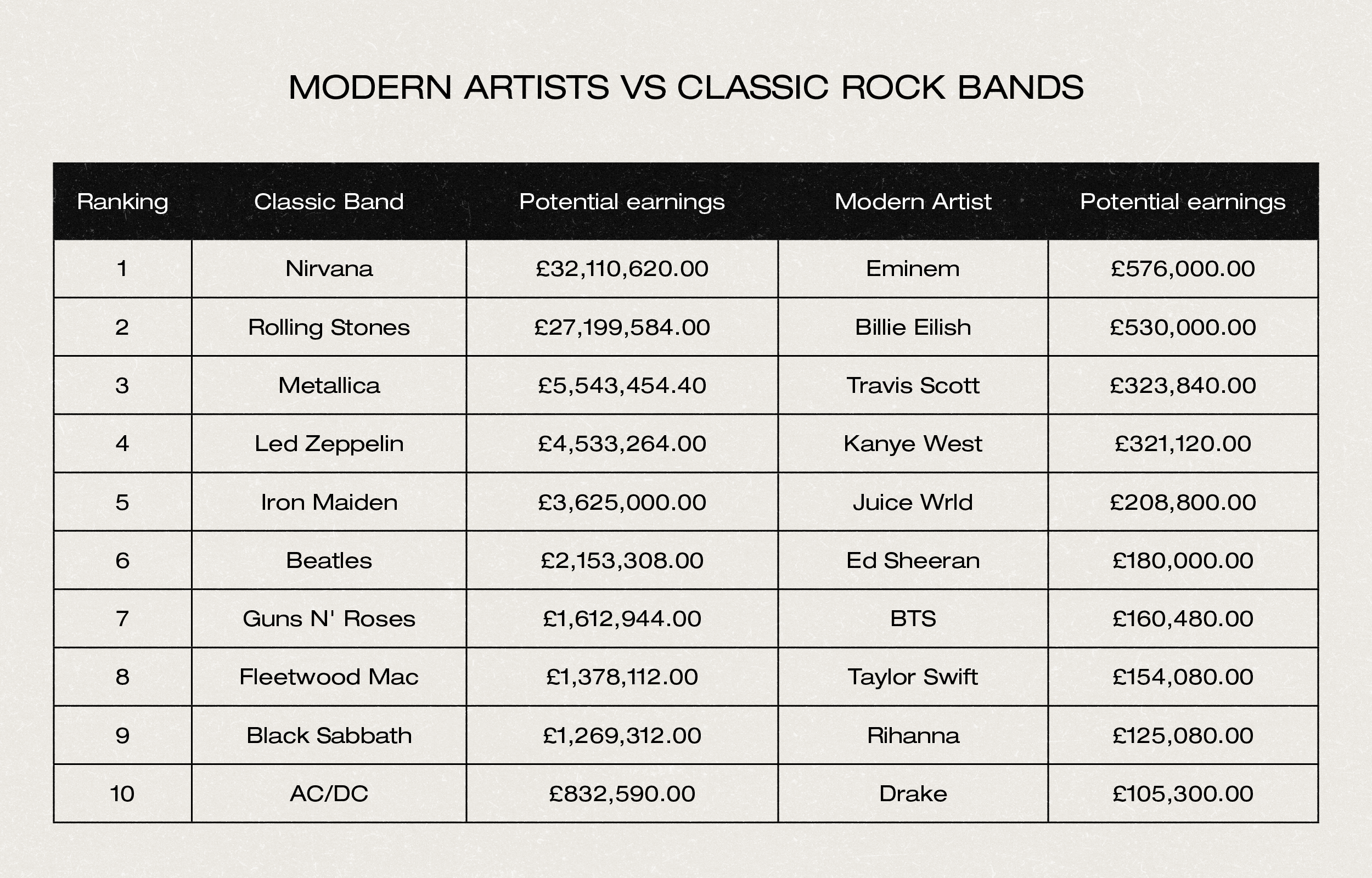
Modern artists are left at a loss when it comes to merch resales across the board. Eminem is the top earner with just £576,000. That’s £31 million less than Nirvana, even though they only have 10 years between the starts of their careers.
It has to be said that rap artists dominate the modern artist re-sales. Half of the top ten modern artists who could get the most money from merch resales are rappers like Eminem, Travis Scott, Kanye West, Juice Wrld and Drake. A switch up from the nearly all rock band top vintage earners.
Most people could argue something like: “Well that makes sense, the vintage tees are older, harder to find and the artists might not even be a band anymore. Plus vintage is cool!”. And they’re not wrong. But, thanks to the mass production of modern merch, we are unlikely to see a renaissance in the prices of vintage tees. They’re just too easy to get a hold of.
Is there a ‘gender pay gap’ in music merch?
Let’s talk gender. Like most other industries, even in music merch women earn much less than men.
In fact, out of the top 50 groups with the highest number of searches, only two were women-fronted: Fleetwood Mac and Bikini Kill. So we took a look at women-fronted groups and compared them to men-only bands.
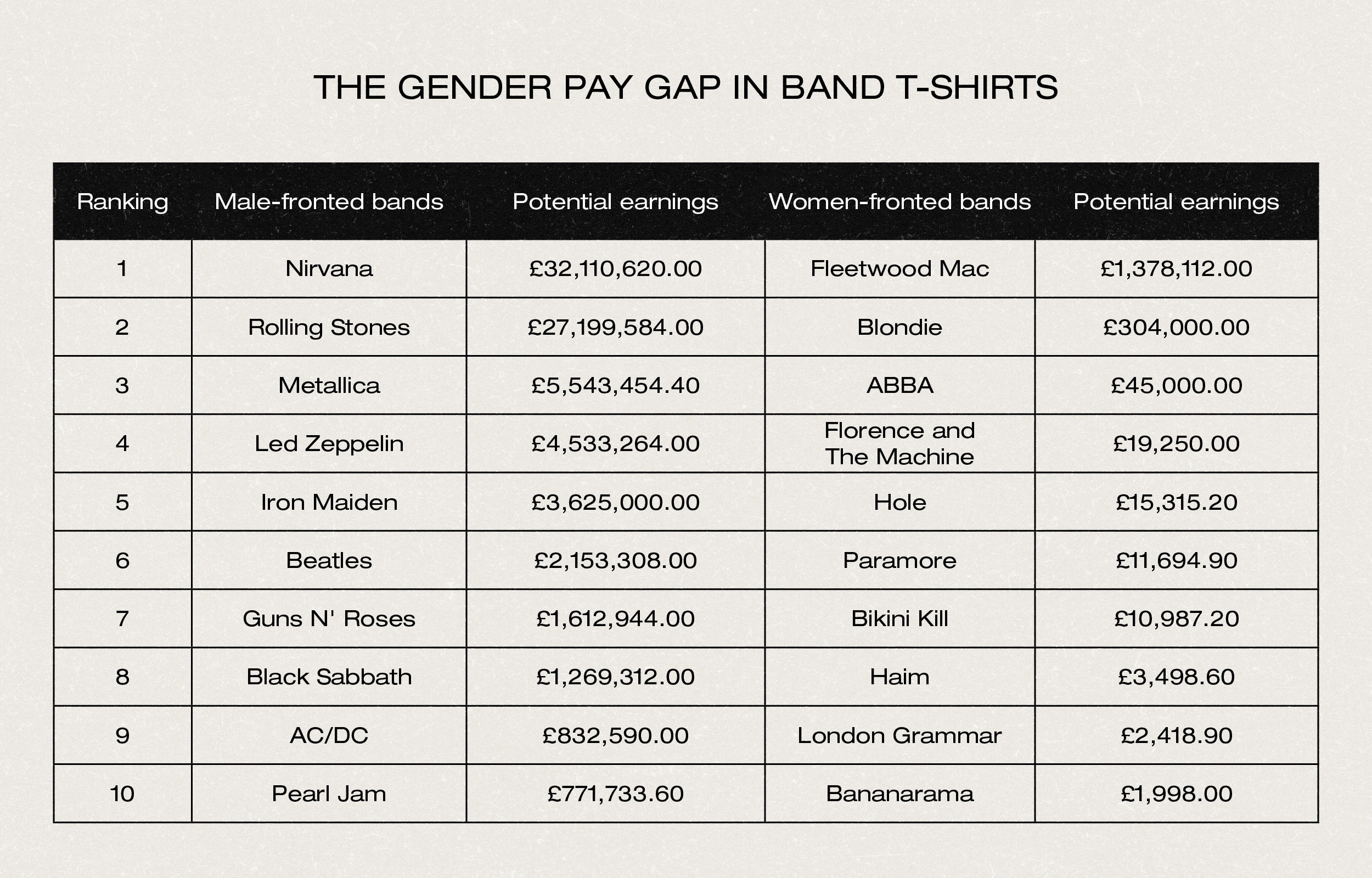
We found that the music-merch pay gap is around £30,732,508, or 2230%. That’s the difference between the potential earnings from Nirvana shirts and Fleetwood Mac vintage tee resales. And Fleetwood Mac is the only women-fronted band to break one million in T-shirt resale potential.
Blondie could get as much as £304,000 in vintage shirt sales, a gap of 8847 per cent between them and The Rolling Stones, despite both of the bands coming in second place for their gender group. Even ABBA misses the £100,000 mark, with potential vintage shirt sales coming in at around £45,000.
We compared this to the top 10 male-led groups, in which all of them could potentially reel in more than £500,000 from vintage T-shirt resale. To add to the bullshit, Pearl Jam (the 10th most searched male-led band) could get £771,733.60 from selling old shirts, but Bananarama (the 10th most searched female-led band) could only manage to net £1,998 in resales. That’s 0.25% of the male equivalent.
So, what are we doing to help?
As artists and fans, what can we do to create change? Our music sales lead, Alisha, has some advice for artists trying to start out selling merch: “Create T-shirts, hoodies or sweats with us. Promote and sell them through Bandcamp. We’ll get them printed and shipped to your fans. It’s zero risk, zero waste, unlike the mass made merch culture we so often see. Thanks to our pre-order model, creators have more control over their merch and its run time.”
Want to make sure you’re consuming ethically? By using more fairly weighted streaming platforms, you can help artists keep creating things for you to enjoy.
Right now, the music industry (like so many others) operates under the might of late-stage capitalism, leading to unethical streaming platforms and bootleg merchandise skimming the money that artists need to make music and huge corporations sliding in to take whatever they can too.
Here at Everpress, we’re partnering with Bandcamp. Independent and smaller artists are now able to sell their merch through Bandcamp, cutting out the ultra-rich and powerful organisations that profiteer from creative minds.
And what can you do?
What can you do to support your favourite new and independent artists? Buy their T-shirts, buy tour tickets, and buy physical copies of their music.
You can also use platforms and services that prioritise artists and encourage fair payment allows your favourite bands to keep making the music you love!
How we researched this article
For our research, we looked at over 70 bands. We found average monthly search volumes for vintage T-shirts (for example, over 8,000 people search for Nirvana T-shirts a month). Once we had this information, we found the highest priced vintage Nirvana T-shirt on eBay, and multiplied this with the search volume to give us the potential earnings. We also worked out how many plays an artist would need to get on Spotify to match this earning. Unfortunately, there wasn’t enough data on bands or artists with gender-non-conforming lead members to do a comparison.
Read More: Creating A Neighbourhood With Radio Alhara



